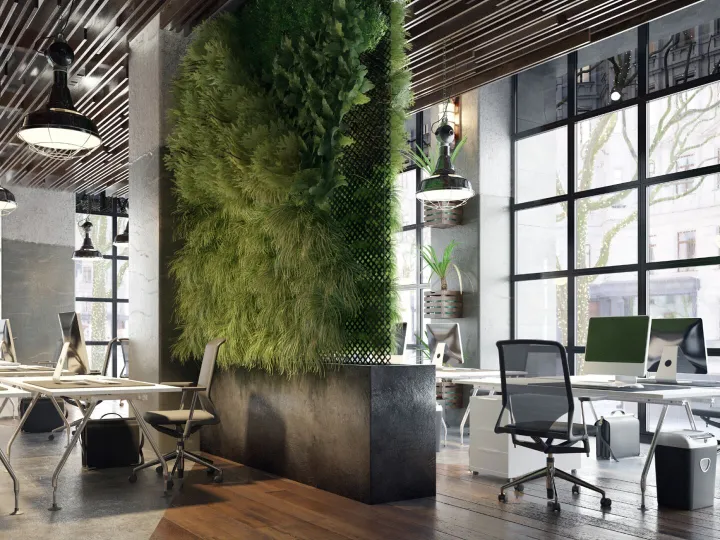Quality in commercial paint projects
First impressions count – as does the finish
Walk into any office building, retail store or public hall in the UK and chances are, the first thing you'll register, consciously or not, is the condition of the walls. Clean lines, consistent colours, and smooth finishes all subtly communicate professionalism and care.
But commercial painting is not merely about visual appeal. In sectors where client impressions and brand identity are paramount, such as hospitality and education, the quality of the finish has a direct impact on how a business is perceived. Shoddy or deteriorating paintwork sends a message – often the wrong one.
It's not just paint, it's a protective system
Beneath every quality finish is a carefully selected system designed to do more than look good. In commercial environments such as schools, restaurants, and shopping centres, surfaces take a beating: scuffs, cleaning chemicals, moisture, and fluctuating temperatures all take their toll.
A high-spec commercial paint system may include multiple layers, such as primer, undercoat, and topcoat, each chosen based on the surface material and usage patterns. For example, acrylic-based emulsions may be ideal for classrooms, while solvent-free epoxy coatings are suitable for high-humidity areas, such as kitchens.
It's not just about durability, either. Some coatings offer antimicrobial protection, low VOC emissions , or are fire-retardant, meeting specific UK building regulations. Quality painting contractors like MCP understand that product selection and application technique must work in tandem, especially when deadlines are tight and disruptions must be minimised.
False economies and cutting corners
It's tempting for some building owners to chase the lowest quote. But as many have learnt the hard way, opting for the cheapest option often proves costly in the long run. Budget painters may skip surface preparation, dilute coatings, or use inferior materials that degrade prematurely, resulting in subpar work.
A poorly executed paint job may require redoing within two years, rather than the typical 10 years that a high-quality job typically lasts. That doesn't just mean higher overall spend, but also further disruption, site closures, and lost business.
A case in point is a leisure centre in Greater Manchester that had to undergo a complete repaint just 18 months after a refurbishment project. Poor adhesion and peeling revealed a lack of surface prep and inappropriate paint selection. What initially appeared to be a bargain quickly became a budgetary burden.
The technical side: specification and application
In the UK commercial sector, painting is governed by several standards . BS EN ISO 12944, for instance, outlines protective paint systems for steel structures--especially relevant for indoor-outdoor hybrid spaces like shopping centres or transport hubs. BS 6150 covers the painting of buildings and ensures systems are correctly matched to surface types and expected performance.
Surface preparation remains key. Whether sanding, filling, or using proprietary cleaners, skipping this stage undermines adhesion. Professional painting teams will follow manufacturer guidelines on spread rates, temperature ranges, and curing times. Application methods, including brush, roller, and airless spray, are selected based on coverage needs and finish expectations. In high-end commercial spaces, spray application offers smoother finishes but demands expert masking and control.
Beyond Aesthetics: Health, Safety and Compliance
In environments such as schools , medical centres, or food service areas, health and safety considerations are closely tied to paintwork. Low-VOC paints can help reduce indoor air pollution, which is particularly crucial in poorly ventilated or high-traffic buildings. Flame-retardant coatings may be necessary for stairwells or fire exit corridors, and all materials must comply with British safety standards such as BS 476.
Furthermore, reputable contractors are fully insured, DBS-checked (when working in education or healthcare), and aware of safeguarding and site risk procedures. In today's regulatory climate, a skilled and compliant contractor ensures peace of mind.
Investing in quality commercial painting
Choosing a contractor who can promise to deliver high-quality work protects reputation and long-term asset value. Whether you're preparing to sell a property or refresh your brand identity, professional painting sends a clear message: this space is well-maintained.
And it's not just external perceptions that matter. Staff morale, customer satisfaction, and even energy efficiency (light-reflective coatings can reduce lighting needs) are subtly but powerfully influenced by the condition of your interiors and exteriors. A good coat of paint might not fix everything, but in commercial settings, it often pays dividends in ways that go well beyond the surface.

